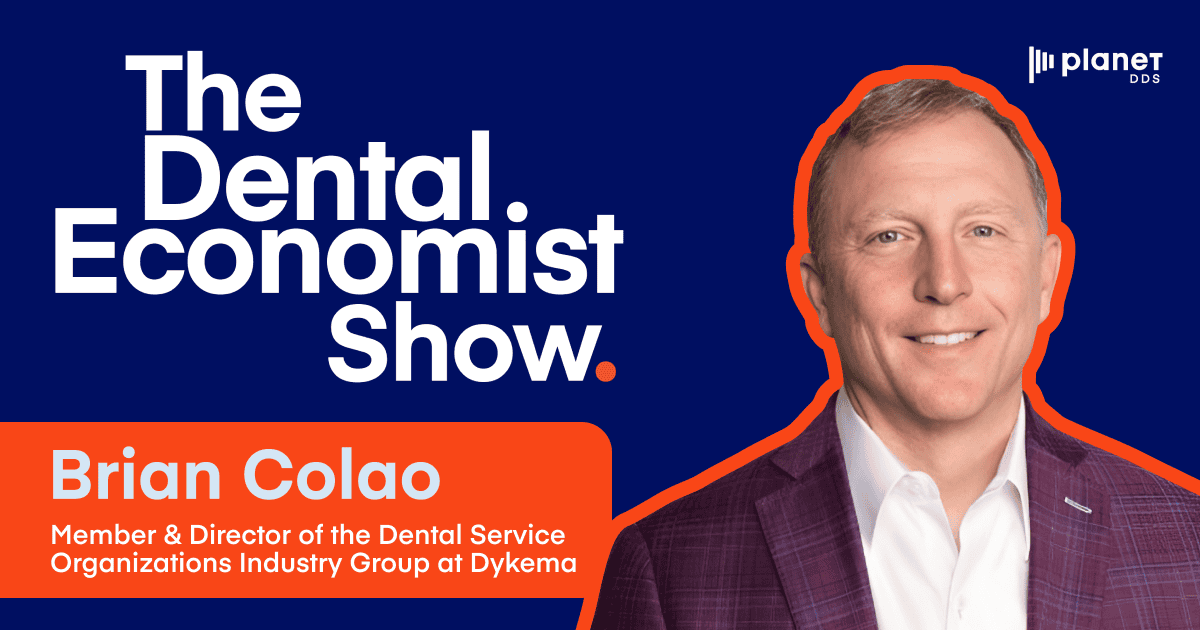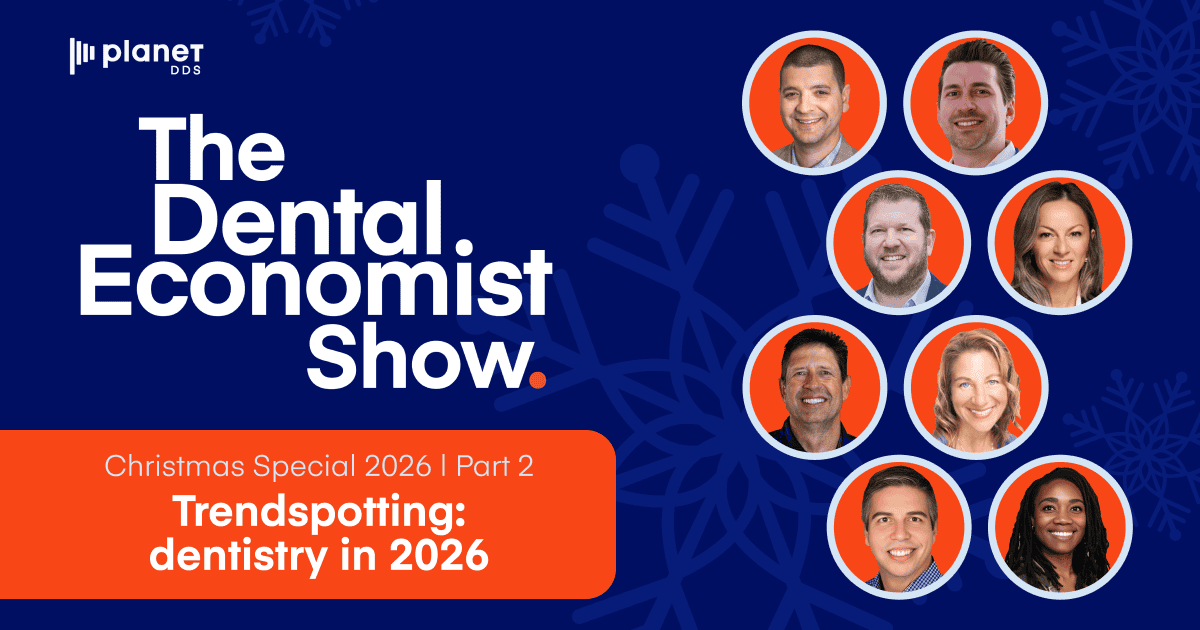What is Teledentistry and How Can It Transform Access to Dental Care

Imagine a circle. Now picture that circle growing increasingly larger. That’s an accurate image for answering the question – “what is teledentistry?”
The circle is certainly expanding to reveal the many ways it can impact dental care.
Before we cover the “how” let’s focus on what teledentistry is.
Understanding telehealth helps answer the question – “what is teledentistry”
Telehealth covers a the broader category of telemedicine. And teledentistry would fit within that scope.
Practical applications of telehealth would include:
- Live (synchronous) video chat
- (Asynchronous) Capability to store-and-forward radiographs, photos, video, and digital impressions to a practitioner via a secure electronic communications system. A related diagnosis or provider service would follow.
- Remote patient monitoring (RPM) for the purpose of collecting personal health and medical data via electronic medical device technologies. Data can be transmitted to another location giving the provider access and the ability to monitor related health conditions and support delivery of care.
- Mobile health provisions for health care education delivered through mobile communication devices such as smartphones and tablets.
These same capabilities would be available within teledentistry as well.
So, what is teledentistry?
An expanded view of how technology is used within telemedicine in general will add to your understanding of teledentistry’s potential.
You, the dentist, and patient remain as the common denominators. The technology available to each of you gives teledentistry it’s viability for oral health care.
Like telehealth there are synchronous and asynchronous applications that apply to teledentistry.
- A (synchronous) livestream of data or video conferencing between you and your patient or in some cases, a specialist.
- An (asynchronous) capability to store-and-forward data from an onsite provider. Exam data can be batched, assigned to a provider, and triaged. You can also send treatment plan data/recommendations to a remote provider and patient when convenience is a factor.
Who can benefit from teledentistry?
Teledentistry increases your capacity as a dentist to provide necessary dental care. The digital benefits of teledentistry broadens your reach to…
- Patients located in rural areas, those would otherwise postpone or delay dental care, or those without convenient access to a dental provider.
- Dental hygienists who provide offsite preventive care or screenings. Gathered data can be digitally delivered to you onsite for diagnosis and necessary follow-up care protocols.
- Specialists interactions are streamlined for more seamless referrals and required follow-up appointments. Necessary documentation and imaging is available in a single, secure, easily accessible digital location.
- Connections with new patient health histories affiliated with pediatricians, physicians, and skilled nursing facilities are enhanced.
DSO clinical leaders have renewed ability to deliver necessary clinical leadership and management to supported dentists.
- Quality control and productivity systems can be expanded via remote access.
- Virtual communications can quickly connect multiple partner practices, group practices, or solo provider practices for training and case evaluations.
How does teledentistry improve access to dental care for rural areas or those lacking convenient, cost-effective access to dental care?
For some dentistry is delayed due to convenience. Others in more rural areas are isolated from dental service providers.
Those statistics increase the relevance of teledentistry to underserved or under-resourced populations. This presents new opportunities for innovative dental care.
To under-served communities:
Teledentistry can narrow the oral health care gaps that exist for those in certain urban locations or rural areas.
To socio-economically deprived communities:
Teledentistry can provide necessary oral health care to those who are underresourced in urban and rural areas.
For specialty care improvements:
Teledentistry can connect specialist expertise and services with a broader number of patients requiring specialized treatment.
For care cost reductions:
Teledentistry can reduce the comprehensive care costs associated with primarily onsite dentistry.
For the integration of oral and general health:
Teledentistry further promotes the oral-systemic health connection leading to improved overall health for more patients.
What coding and regulations are attached to teledentistry?
The American Dental Association (ADA) has issued policy guidelines for teledentistry and routinely updates the related information. Codes have also been created to support reimbursements for teledentistry services. The coding requirements were effective beginning January 2018.
You and your hygienists have the freedom to apply teledentistry in creative ways to your patient base. It’s essential that you also determine the state laws and regulations that apply.
Communicate with your state’s dental board for clarity on the legal and ethical guidelines before you add teledentistry to your patient care strategies.
And speaking of innovative care strategies…
How can teledentistry be used to improve patient care?
There are a variety of ways you can deploy teledentistry. Use your imagination and think of creative uses to deliver oral health care.
Provide mobile dentistry services to…
- Rural areas or underserved communities within your reach
- Schools
- Senior care facilities
Increase clinical access for…
- Dental hygienists in solo practices
- Oral cancer screenings
- Research
- Collaboration between dentists and physicians
- Emergency dental procedures in offsite emergency or urgent care centers
Enhance continuing education and oral health education…
- In remote areas
- In schools
- For monitoring and tracking dental student clinical trials
- To supplement classroom educational methods
These and more applications are lifting the importance of teledentistry in the future of dental care.
What technology is necessary and available for teledentistry?
Technology drives teledentistry. The basics would include:
- Hardware and software that provides HIPAA compliant communication capabilities via a portable or mobile device.
- Imaging capability via intraoral cameras and a portable X-ray device for capturing and transmitting diagnostic images.
- Internet access for both you (the dentist) and the patient.
And about available technology…
Denticon’s dental practice management software is uniquely aligned with teledentistry. The cloud based platform provides secure storage for your patient information. It also gives you remote, real-time access to that information making it perfectly suited for most teledentisry onsite or offsite applications.
Learn more by requesting a free demo today!
Break free from the constraints of legacy desktop software with Denticon.
Get a Free Demo now and contact us for more information about how Denticon can streamline your systems and operational tasks.



